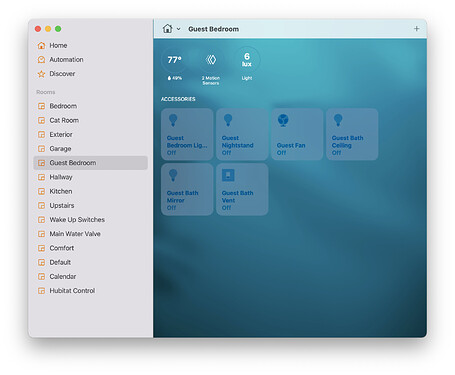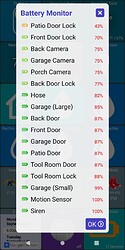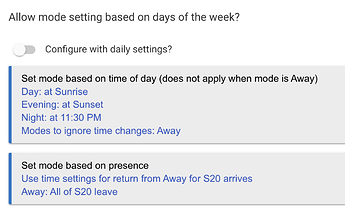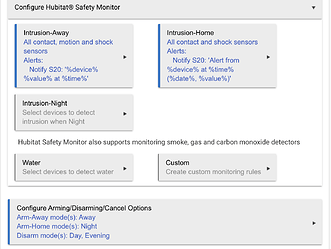Alright, we’ll, my first day with the system and it’s been rough. Wink had such a well refined system at the end, trouble free and easy to use. Im having fun learning and using this new system, but, wish the hardware was a little more powerful and comparable to Winks Hub 2…
Here are my observations, questions, and comments after this first day. I appreciate any and all feedback and help in the process here…
So here we go…
Of course I tried to tackle Schlage locks as my first devices which I have read lots of trouble on in these forums, but, all-in-all, I am left confused. I can’t for the life of me understand the antenna range of the hub, it’s a conundrum. Here’s what I did… first, set up the hub, added aeotec range extender 7’s, the first 15 feet from the hub, the second 15 feet from that, and the third about 60 feet from that. The goal being to try to see how routes would be built and if the repeaters would even work… the first LOCK is 6 feet from the hub. That added just fine. The second is 6 feet away from the last repeater, or about 90 feet from the hub. Would not add. I tried removing the repeaters and putting them back in and resetting the network five times sometimes with security and sometimes without, having no idea how s0, s1, s2, etc. and no security works on these repeaters. And yet. Adding an ancient legacy gen1 vizia rf light switch at the end of the line, 90 feet from the hub, no problem… So, I assume the light switch either has an awesome antenna and power, or, utilized the repeaters successfully, while the lock was not… Lastly, I unplugged the hub and moved it to the end of the line by the other lock (as some folks said to add it this way then move it back, perhaps assuming that bigger packets sent during initialization wouldn’t be lost) and then I was able to add it no problem as long as the hub was not more than 15 feet away. BUT, then the other lock 90 feet in the other direction would no longer communicate. So, proof the locks do not use the repeaters I guess and also proof that adding a lock right next to the hub does not mean it will work after added.
And so, all of this leaves me with questions…
-
How does s2 security work on the repeaters? If a device has a lower grade of security or none at all, will the repeater even pass the traffic if it has been set up with security? How? If a tunnel is built with the security, how does non secured data enter the tunnel? And I’d it’s insecure on either side, seems pointless to secure the middle?
-
Zwave topology map was wierd. It basically just makes a map in order of how you add things which means if that’s the route packets are taking, it could be chaos with long gaps if you do not add things by proximity… any thoughts comments here? Also, routes were mostly empty in the column. Is that normal?
-
Tomorrow I’m going to add some more light switches along the 90ft route, hoping they will pass information that the repeaters are missing for some reason. I might even try throwing a fourth repeater in the 90ft span to see if I can get thing running.
-
I do have a question about fees, subscriptions, and cloud / saas services… while setting this up in my firewall I encountered a couple things which raised my eyebrows… One, this device does not play well with NAT across different subnets. Utilizing a computer to set it up with an open hole from another subnet generated page loads of sometimes 45 seconds or more. On the same subnet, 3-4 seconds max. Very odd… but Two, the bigger issue, is I watched this device communicate with multiple external WAN ips, we’ll after registration took place. Some appear to be Amazon web services… being that these external services are obviously paid for by someone for the hosting, does this not present a situation where like Wink, subscriptions and charges could be assessed to pay for those web services some day? Will the device work without these services if they were ever shut down? I haven’t tried blocking outbound traffic to these servers yet to see if it affects the operability of the device and the network but am curious if anyone knows what these external communications are for and whether the device will work normally without them.
Thanks all and hopefully tomorrow will be a better Migration Day 2…





